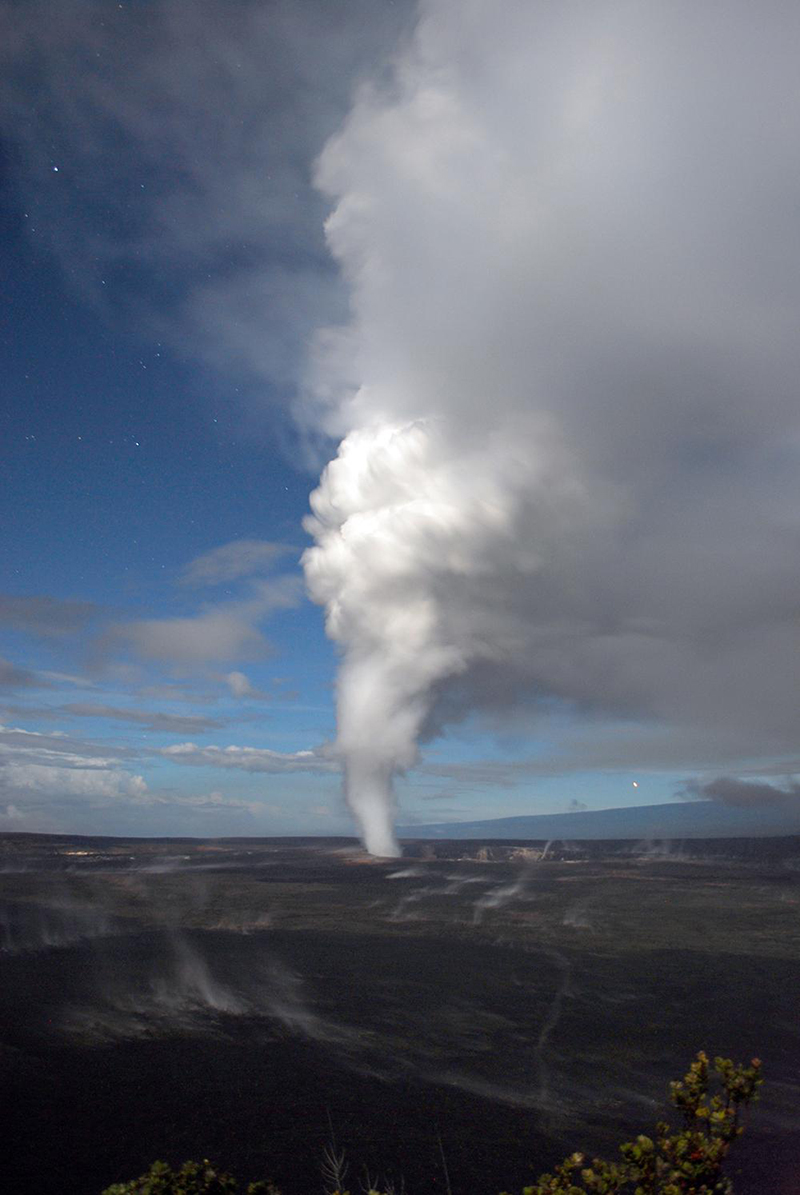Computer model developed for predicting the dispersion of vog
 Vog is created when volcanic plumes react in the atmosphere. Image courtesy of USGS, Michael Poland.
Vog is created when volcanic plumes react in the atmosphere. Image courtesy of USGS, Michael Poland.A paper published this month in the Bulletin of the American Meteorological Society details the development and utility of a computer model for the dispersion of volcanic smog or “vog,” which forms when volcanic sulfur dioxide gas interacts with water and coverts it to acid sulfate aerosol particles in the atmosphere.
Vog poses a serious threat to the health of Hawai‘i’s people as well as being harmful to the state’s ecosystems and agriculture. Even at low concentrations, which can be found far from the volcano, vog can provoke asthma attacks in those with prior respiratory conditions. It also damages vegetation and crops downwind from the volcano.
Scientists from SOEST, under the leadership of Steven Businger, and in collaboration with researchers at the Hawaiian Volcano Observatory (HVO), developed a computer model for predicting the dispersion of vog. The vog model uses measurements of the amount of sulfur dioxide (SO2) emitted by Kilauea, along with predictions of the prevailing winds, to forecast the movement of vog around the state [see the Vog Measurement and Prediction Project (VMAP) page].
Read more about it and watch the video report at KHON2; read more about it in the UH Mānoa News, the Hawaii Tribune Herald, and the Honolulu Star-Advertiser (subscription required).



